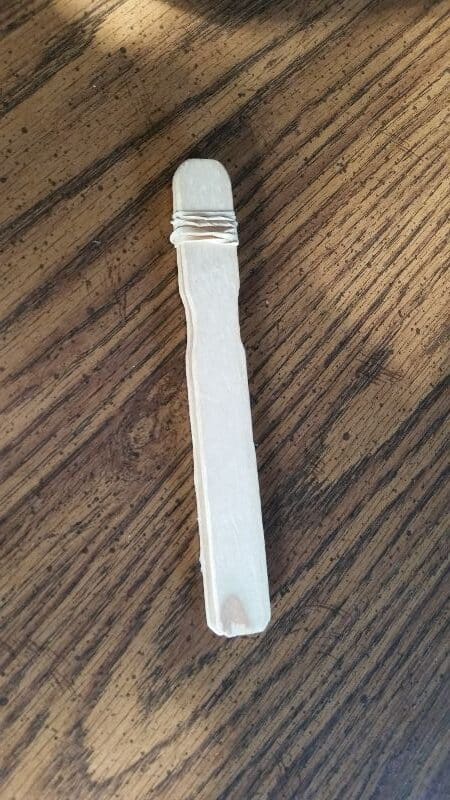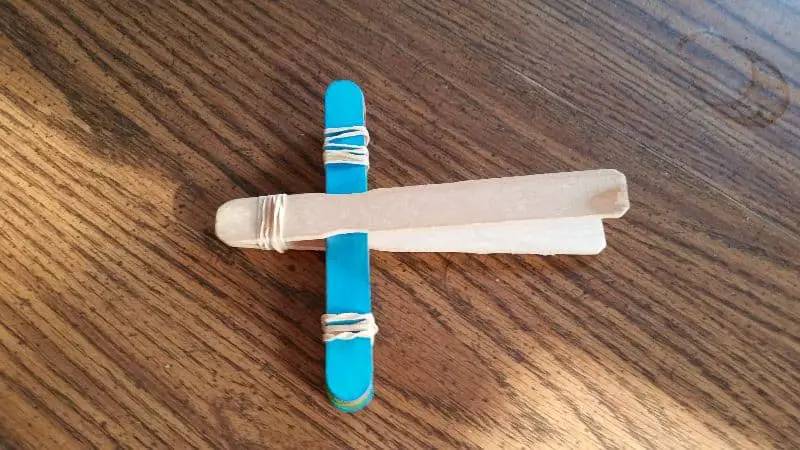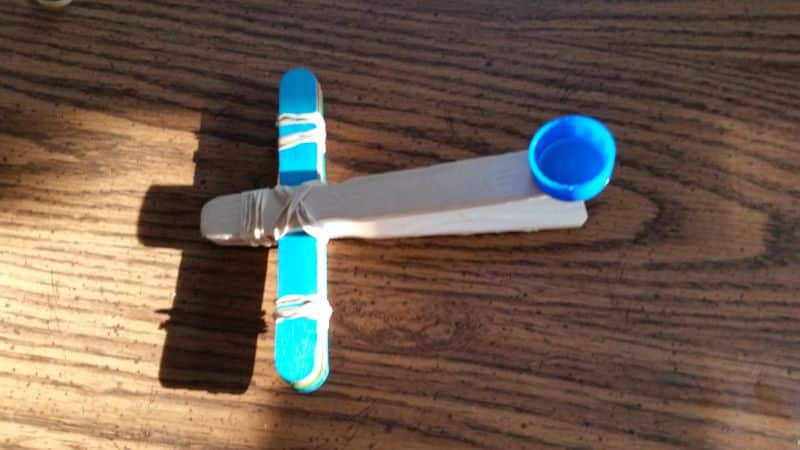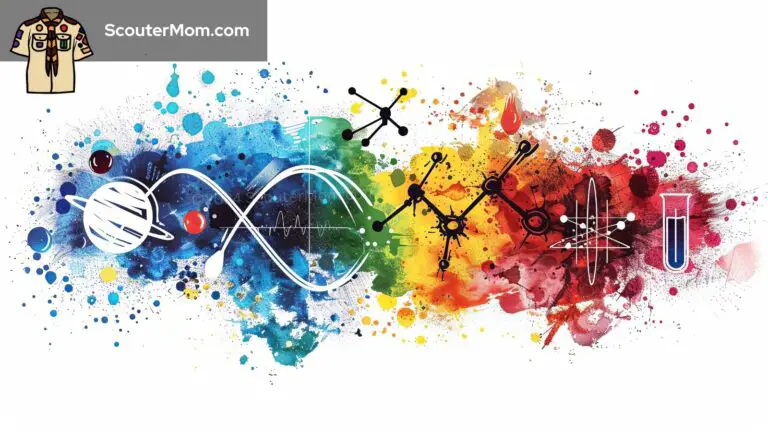Building a catapult is a fun STEM activity for Scouts. They can learn about physics and energy. An easy way to do this is with a small scale catapult. This craft stick catapult is one of several small catapult designs in the book Mini Weapons of Mass Destruction.
Below, you will find instructions for how we built it. This is a little different than described in the book.
Build a Craft Stick Catapult
Materials
- 2 tongue depressors or extra sturdy craft sticks
- 7 craft sticks (or 7 more tongue depressors)
- 7 rubber bands
- 1 plastic bottle cap
- hot glue gun
Construction
1 Stack the seven craft sticks together and use two rubber bands to hold them tight:

2. Rubber band the two tongue depressors together at one end

3. Slide the craft stick bundle between the two depressors.

4. You need to add a couple of diagonal rubber bands to keep the craft stick bundle in place. Place a rubber band diagonally over the craft stick bundle/depressor intersection.

5. Wrap it several times to make it tight.

6. Repeat this with another diagonal band going the other way.

7. Hot glue the bottle cap to the end of the top depressor. Use safety precautions. Younger Scouts will need adult help with this step.

Now your craft stick catapult is ready to fire. Remember to only shoot in a safe direction and wear safety glasses. Small marshmallows or erasers make good ammunition. To fire, just place your ammo in the bottle cap, push down on the end, and release. If your catapult shoots more up than forward then you can try adjusting the position of the craft stick bundle or raise up the end.
How Does It Work?
When you push down on the end with the bottle cap, it stores up potential energy. When you release the end, the potential energy turns into kinetic – or moving – energy. The energy is transferred to the object in the cap, which launches. Then gravity pulls the object back down to the ground.
Related Resources for Craft Stick Catapult

More about Scouts and STEM (Science, Technology, Engineering, and Mathematics)
Today’s youth must be familiar with the STEM areas – science, technology, engineering, and mathematics – to be prepared for the world of tomorrow. BSA programs offer many opportunities for Scouts to experience STEM activities.
Nova Awards Program (STEM Award)
STEM stands for science, technology, engineering, and mathematics. The NOVA Awards program combines knowledge of STEM concepts with hands on activities.

Cub Scout Science Experiments and Ideas
Cub Scouts love science! It is almost like magic to them. You can spark and interest in science with these Cub Scout science experiments and ideas.




Leave a Reply